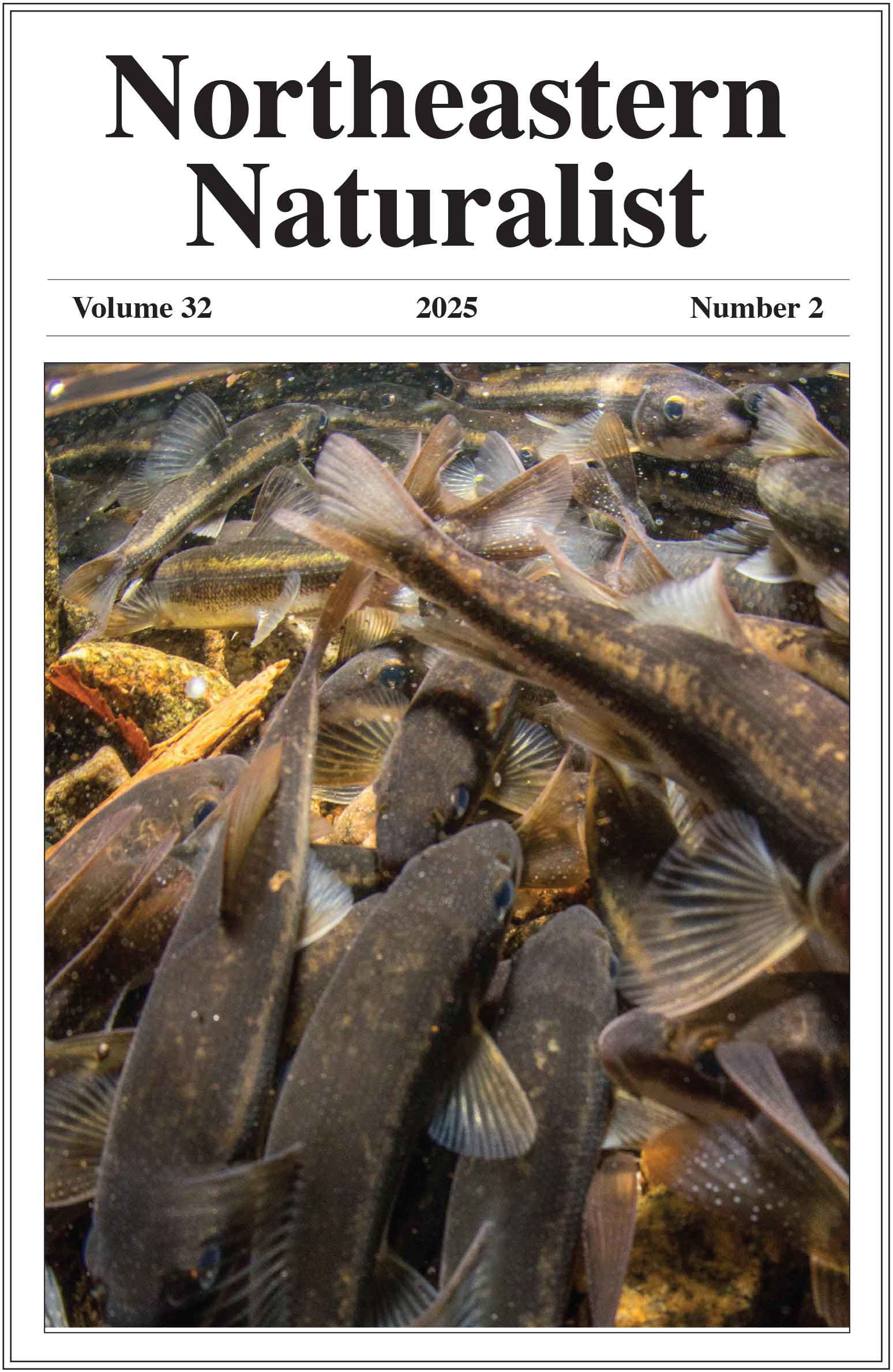Calculating Rates of Shoreline Change in a Coastal Embayment with Fringing Salt Marsh Using the “Marshline”, a Proxy-based Shoreline Indicator
Mark Borrelli1,2,* and Jon C. Boothroyd3
1Coastal Processes and Ecosystems Laboratory (CaPE Lab), School for the Environment, University of Massachusetts-Boston, Boston, MA 02125. 2The Center for Coastal Studies, Provincetown, MA 02657. 3Department of Geosciences, University of Rhode Island, Kingston, RI 02881. *Corresponding author.
Northeastern Naturalist, Volume 27, Special Issue 10 (2020): 132–156
Abstract
Along the shoreline of a coastal lagoon with fringing salt marsh, we used the basinward edge of marsh vegetation, or marshline, as a shoreline indicator. We quantified uncertainties associated with the delineation of this indicator from aerial photographs. Where both could be delineated, we compared the marshline to the most widely used proxy-based shoreline indicator, the high water line (HWL). The marshline was shown to better represent change than the HWL along fringing marsh shorelines in this study. The visual cues used to delineate the marshline on aerial photographs were more objective, repeatable, and reliable than the visual cues associated with the HWL. In addition, several sources of uncertainty in calculating rates of shoreline change are eliminated, or significantly reduced, when using the marshline. Uncertainties associated with the timing of aerial photographs regarding tidal stage, seasonality, storm impact, as well as the misinterpretation of the shoreline indicator are all either negligible or of minimal influence when calculating uncertainty for the marshline. We calculated rates of shoreline change along a 40-km stretch of lagoon shoreline with fringing marsh. Less than 9.8 km of coast was outside the range of uncertainty using the HWL as compared to 22.5 km using the marshline for the same segments of shoreline for the same temporal period.
![]() Download Full-text pdf (Accessible only to subscribers. To subscribe click here.)
Download Full-text pdf (Accessible only to subscribers. To subscribe click here.)
Access Journal Content
Open access browsing of table of contents and abstract pages. Full text pdfs available for download for subscribers.
Issue-in-Progress: Vol. 32 (3) ... early view
Check out NENA's latest monograph and Special Issue:













 The Northeastern Naturalist is a peer-reviewed journal that covers all aspects of natural history within northeastern North America. We welcome research articles, summary review papers, and observational notes.
The Northeastern Naturalist is a peer-reviewed journal that covers all aspects of natural history within northeastern North America. We welcome research articles, summary review papers, and observational notes.